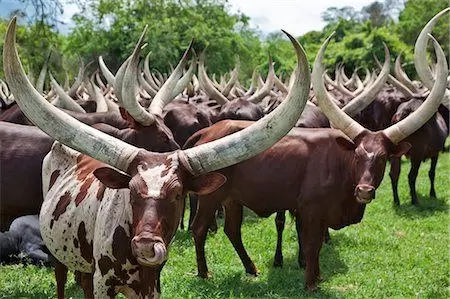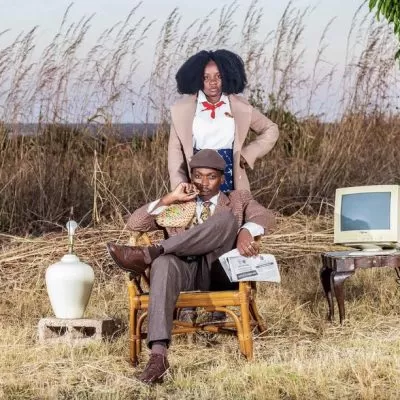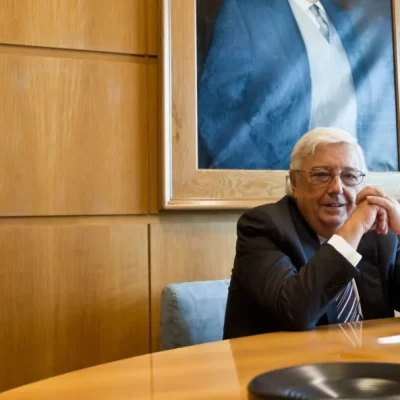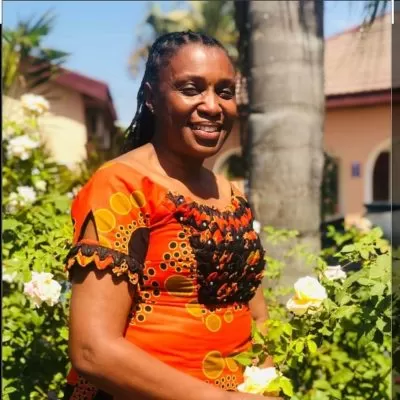The Ncwala Ceremony, A Testimony of Perseverance, Survival and Tenacity of the Ngonis
By Kalata News
CHIPATA February, 2025 – THE 2025 Ncwala Ceremony, which will be held from February 18 to February 22, 2025 at an estimated cost of 2.2 million Kwacha, will be one of the show pieces of the rich reign of King Mphezeni the 4th.
It will also be a continuing testimony of the resilience, perseverance and the survival skills of the Ngoni people who, like a stomping raging black elephant that crushes anything on its path, covered an estimated distance of 1,600 kilometres from their ancestral lands down south to the mountainous regions of Chipata, taking a period of close to three decades (1819-1845) to complete.
As testament of this DNA, King Mphezeni the 4th, the official host of the Ncwala, is already the longest reigning monarch in Zambia, and is celebrating 43 years on the throne during this year’s Ncwala.

The Ncwala Ceremony, known as the Umkhosi we Ncwala, is an annual traditional ceremony of the Ngoni people of Eastern Zambia and the Swazis of Eswatini. In Zambia, it is a traditional ceremony where the Ngonis celebrate their traditional victories from the time they left their ancestral lands in modern day KwaZulu Natal, South Africa to Eastern province of Zambia.
They also use the ceremony to pay homage to their ancestral spirits for their guidance and protection throughout the years and celebrate the first fruits of their annual bumper harvests.
The Ncwala Ceremony has over the years become one of Zambia’s international and local crowd pullers with thousands of people converging in Chipata and over twenty million viewers watching the ceremony via television and social media portals.
Over the years this traditional ceremony has become a big awareness event and a commune of fun, pleasure, food and drink and used by the Ngonis to educate their communities on prevailing diseases such as HIV and AIDS, Cholera and Covid19. Recently it has become an awareness event of the negative effects of climate change, how to mitigate them and has now expanded to issues of wild life conservation.

Ncwala ceremony denotes unity, peace, laughter, education and abundance of food.
However, things were not always like this.
The Ngoni people of Zambia as well as the Ngonis of Malawi and Tanzania, also known as the Zwangendaba Jele Ngonis, had to fight for survival for them to be able to be present every year in Chipata to celebrate ubukhosi be Ncwala.
Theirs is a celebration of a treacherous journey fraught with dangers from wild animals, foreign tribes wary of the Ngunis (Ngoni, Ndebele, Zulu etc) and local tribes working in conjunction with the Portuguese seeking slaves to sell in the Delagoa Bay markets.
Uprooted from their ancestral lands near the St Lucia bay in what is today, Kwazulu Natal, the Ngonis march towards new lands started even before the Zulu King Shaka invented his short stabbing spear known as the assegai.
While events were unfolding at the Cape of Good Hope, the slave trade at Delagoa Bay had been expanding since about 1810 in response to demands for black labour from plantations in Brazil and on the Mascarene Islands. During the late 1820s, slave exports from the Delagoa Bay area increased putting pressure on the local bantu tribes to escape the demands for slaves, and pitting one bantu tribe against the other and sending brothers and sisters on a coalition course.
The Cape of Good Hope, 50 kilometers away from the modern Cape Town City in South Africa, was given its name by sailors desperate to successfully navigate around the treacherous promontory of rocks on the sea route to India. And this infamous place at the very bottom of the continent still represents a risk to ships. Many vessels have fallen prey to the rough seas and rugged cliffs here.
These events triggered what came to be known as Mfecane. The Ngonis were caught right in the middle of Mfecane.
Mfecane was a time of wars and migrations in southern Africa in the early 1800s.
Mfecane is an Nguni word which means ‘crushing’ and was used by the Nguni to describe the violent wars that tore apart Central and Southern Africa between 1820 and1835.
The people involved belonged mainly to the Nguni tribal groups of which Ngonis, Ndebele, Suthus and Zulus among others are members.
Mfecane means “destruction” or “crushing” in the Zulu language. In the Sesotho language, the events were known as the Difaqane, or Lifaquane which means “forced migration.”

This forced migration was caused by a series of tribal wars that engulfed the area between different tribal groups over grazing land, food and resources.
Mfecane is responsible for the modern tribal history of the Southern and Central Africa because of the areas it affected which stretched from the Tugela River in modern day South Africa to areas in modern day Botswana, Mozambique, Malawi, Zimbabwe and Zambia.
Causes of Mfecane
Specific causes of Mfecane included the rise of the Zulu military kingdom under King Shak ka Senzakhona of the Zulu (c. 1787–1828), drought and overpopulation, trade competition among tribes dealing with the Portuguese and the Dutch and the migration of Dutch Boers into the interior of Southern Africa in the 1830s and 1840s.
Effects
The effects of these were forced migration by many bantus from their their traditional lands into the interior far as Malawi, Zambia, and Tanzania.
Other effects included formation of new African kingdoms with strategic military alliances, with some leaders adopting Shaka’s military strategies, clan destruction with some clans forced to join other non-tribal groups thereby forming new languages.
Fighting Wars.
The 1810s saw the continued expansion of the Ndwandwe and Mthethwa Paramountcies, as well as the Portuguese Delagoa Bay slave trade. The Ndwandwe Paramountcy came to blows with the Mthethwa in the late 1810s, ultimately defeating and slaying their leader Dingiswayo kaJobe.
The Mthethwa promptly collapsed as its client polities reasserted independence. The Ndwandwe king Zwide kaLanga went to war with one of these breakaway polities, the amaZulu of Shaka ka Senzangakhona.
Their raids and counterraids proved costly and indecisive, contributing to the breakup of the Ndwandwe Paramountcy.
Groups broke away under Soshangane and Zwangendaba who settled their followers in the Delagoa Bay region, while Msane did the same in what is now eastern Eswatini.
King Zwide, now in a position of weakness, withdrew to his territories north of the Phongolo to rebuild. Shaka took advantage of the power vacuum to expand the Zulu state to the Mkhuze River.
By the 1820s, Shoshangane’s Gaza Kingdom and Shaka’s Zulu kingdom had established themselves alongside the remains of the Ndwandwe Paramountcy as the major players in the Northeast of Southern Africa.
Msane, Zwangendaba, and the followers of Nxaba, for their part, were displaced farther north. The Gaza Kingdom expanded to the northeast, heavily raiding small Tsonga polities.
The Ndebeles.
Around 1821, the Zulu general Mzilikazi ka Mashobane of the Khumalo clan defied Shaka, and set up his own kingdom. He quickly made many enemies: not only the Zulu king, but also the Dutch Boers (farmers), and the Griqua and Tswana. Defeats in several clashes convinced Mzilikazi to move north towards Swaziland. Going north and then inland westward along the watershed between the Vaal and the Limpopo rivers, Mzilikazi and his followers, the AmaNdebele, established a Ndebele state northwest of the city of Pretoria.

From 1837 to 1838, the arrival of Boer settlers and the subsequent battles of Vegtkop and Mosega, drove the Matebele north of the Limpopo. They settled in the area now known as Matabeleland, in present-day southern Zimbabwe. Mzilikazi set up his new capital KwaBulawayo (place of death) in modern day Bulawayo, Zimbabwe. The AmaNdebele drove the MaShona of the region northward and forced them to pay tribute. This caused resentment that has continued to the current day in modern Zimbabwe.
The Ngonis of Zambia, Malawi and Tanzania
At the Battle of uMhlatuze River in 1818, the Ndwandwe were defeated by a Zulu force under the direct command of Shaka. Soshangane, one of Zwide’s generals, fled to the territory now Mozambique with the remainder of the Ndwandwe. There, they established the Gaza kingdom.
Another General, Zwangendaba ka Ziguda Jele, a commander of the jele clan, a section of the Ndwandwe army, fled north with Soshangane after his defeat in 1819.
Zwangendaba’s followers were henceforth later called Ngoni. Continuing north of the Zambezi River, who upon his death, his people split into Five (5) distict groups. Nxaba of the Maseko, who led another part of the Ngoni people, the Maseko Ngoni founded another state to the southern part of what is today Malawi.
The Crossing of the Zambezi River.
In November 1835, the Ngonis under their inspirational figurehead of Zwangendaba crossed river uGwembe river (Zambezi) in grand style into the territory that is now known as Zambia.
We know this date because of an eclipse of the sun which happened at the time of the crossing.
They crossed the uGwembe river in the Luangwa District area known as Villa Zumbo near the confluence of the Luangwa and Zambezi river.

The crossing done in smaller army groups led by Ngoni indunas and army generals, is said to have cost the Ngonis their animals, that got lost in the river and elderly women and children, that were left behind.
The crossings are also said to have been facilitate by the Chikunda people of that area, who being expert boatsmen and river people, knew which parts of the river were shallow.
During the famous crossing of the Zambezi River by the Ngonis, the five year old Ntutho Mphezeni was on the shoulders of his father, King Zwangendaba.
Arrival in Eastern Province
Undeterred, the marauding Ngonis of Zwangendaba marched onwards towards Nsenga and Chewa land, where they finally settled in the present day Chipata and surrounding areas of the Ngonis of King Mphezeni the 4th.
Sons of Zwangendaba.
Ntutho Mphezeni, first born child of the King born in 1830. He was initially called Ntutho but would later be called Mphezeni, a name that would stick with him for generations.
M’mbelwa Mhlahlo, founder of the Mombera kingdom born in 1840. Now settled in Mzimba district in Northern Malawi among the theTumbukas.
Mtwalo, described as the most handsome of all the princess, Mtwalo was quite young at the time his father passed on.
Mpherembe who founded the Mperembe Chiefdom which quite impressively, some villages in the chiefdom of Mperembe still speak the original Ngoni language; the language is ironically even taught to the school going children. It is still puzzling how this is possible when just a few kilometers away from Mperembe’s chiefdom, other Ngoni villages ‘lost’ their native tongue.
Zwangendaba (heard from stories/news) died around 1845 leaving behind many sons, who included Ntutho Mphezeni, Mmbelwa, Mtwalo and Mphelembe, who today rule over the Ngonis of Zambia, Malawi and Tanzania.

Every celebration of the Ncwala is testament to how far and how strong the Ngonis as a people are, meeting every challenge thrown at their nation with resolve and tenacity.
Bayethe wena muNgoni.
Download Kalata News February/March Edition to read more of the Ncwala here: Kalata BusinessNews Feb-March 2025.pdf – Google Drive





